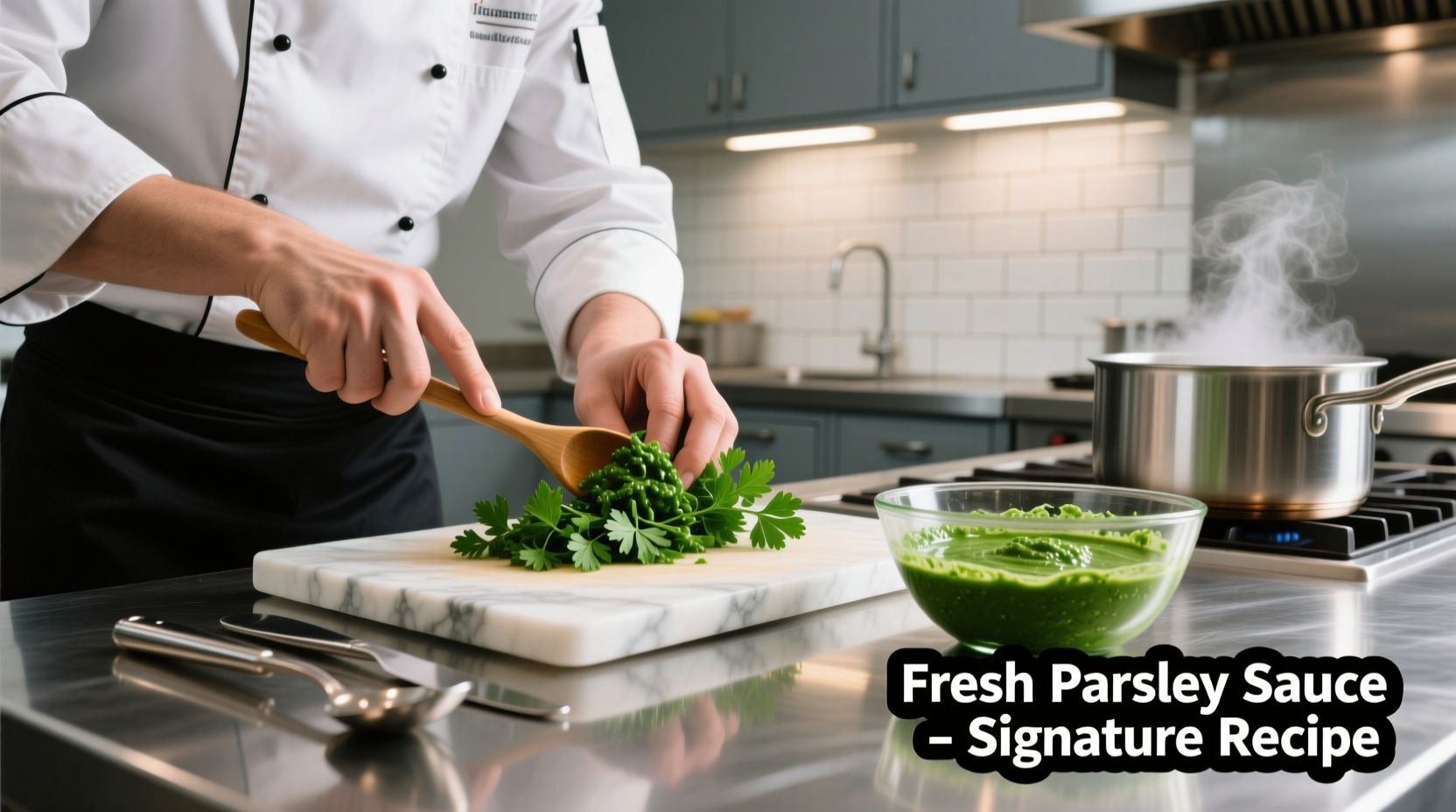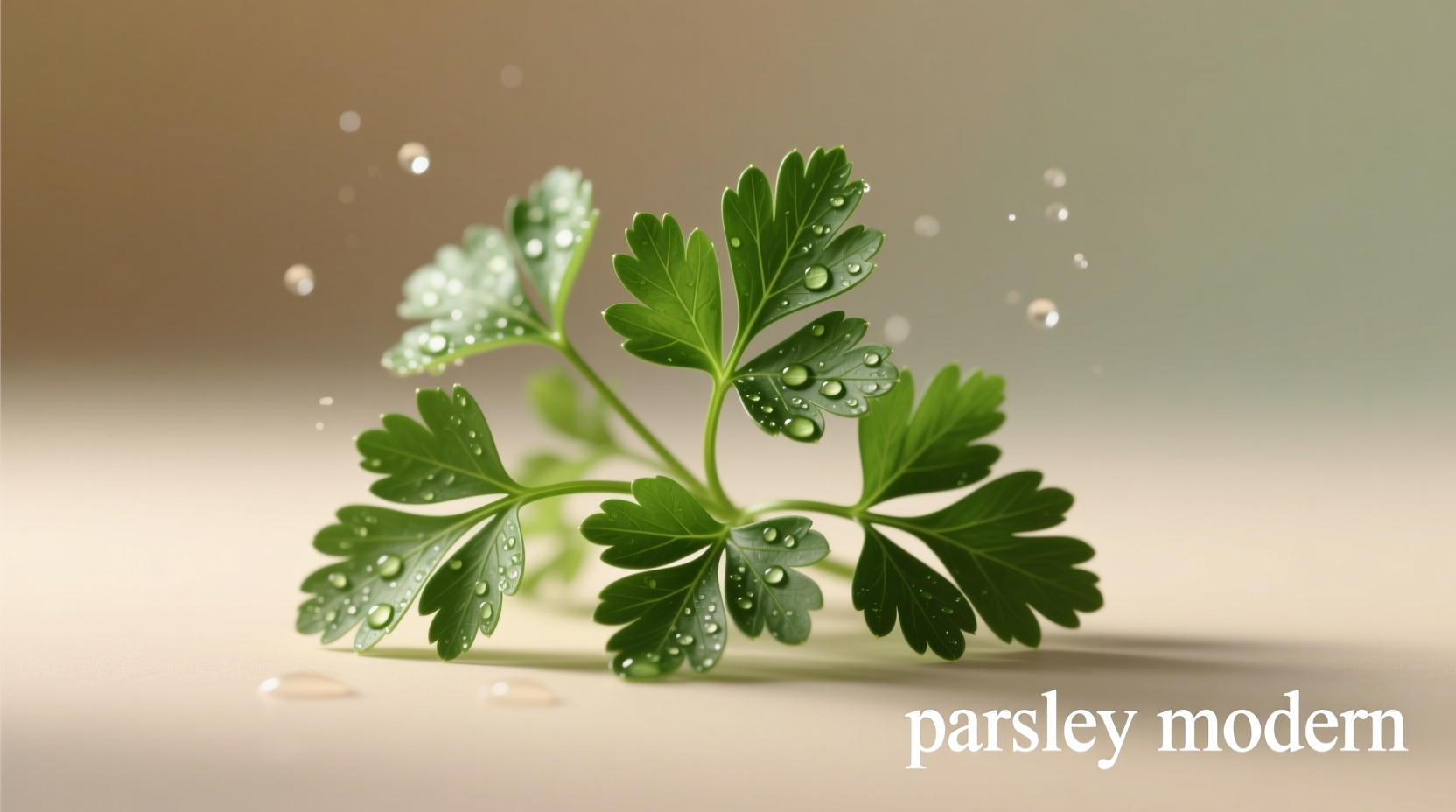For decades, parsley languished as an afterthought on dinner plates—a decorative sprig pushed aside while diners focused on the main course. But a quiet revolution has transformed this humble herb into a cornerstone of contemporary cooking. Modern culinary professionals now treat parsley with the respect once reserved for more 'prestigious' ingredients, recognizing its versatility and nuanced flavor potential.
The Evolution of Parsley in Culinary History
Understanding parsley's journey from garnish to star ingredient requires examining its historical context. Ancient Greeks used parsley in victory wreaths and funerary rites, while medieval Europeans employed it medicinally. The herb entered European cuisine around the 16th century but remained primarily decorative until recently.
| Era | Parsley Usage | Culinary Significance |
|---|---|---|
| Ancient Greece | Ritualistic decoration | Symbolic rather than culinary |
| Medieval Europe | Medicinal applications | Used for digestion and purification |
| 18th-19th Century | Basic garnish | Visual appeal with minimal flavor contribution |
| Modern Era | Primary flavor component | Essential ingredient in sauces, beverages, and main dishes |
Contemporary Applications Transforming Parsley Modern
Today's innovative chefs treat parsley as a foundational ingredient rather than an afterthought. The shift toward 'parsley modern' represents a broader culinary movement emphasizing ingredient integrity and maximizing flavor potential from traditionally undervalued components.
Parsley as Sauce Foundation
Professional kitchens now create vibrant parsley-based sauces that serve as the flavor backbone for entire dishes. Chefs blend fresh flat-leaf parsley with quality olive oil, garlic, and acid to create versatile sauces that enhance proteins, vegetables, and grains. Unlike traditional pesto that relies heavily on basil, modern parsley sauces showcase the herb's unique grassy, slightly peppery notes.
Innovative Beverage Applications
The parsley modern movement extends beyond savory dishes into beverage creation. Mixologists incorporate parsley into craft cocktails for its bright, clean finish, while juice bars feature it in green blends for nutritional benefits. According to the USDA FoodData Central, parsley contains significant vitamin K, vitamin C, and antioxidants that contribute to its growing popularity in health-focused beverages.

Main Dish Integration
Modern chefs incorporate substantial quantities of parsley directly into main dishes. Techniques include:
- Creating parsley 'pesto' as a base for fish and chicken dishes
- Using parsley stems in stocks for deeper flavor (often discarded in traditional cooking)
- Preparing parsley-centric dishes like 'parsley tabbouleh' where it comprises 80% of the ingredients
- Blending parsley into compound butters for immediate flavor infusion
Optimal Parsley Varieties for Modern Cooking
Not all parsley serves modern culinary applications equally. Understanding the differences between varieties helps home cooks achieve professional results.
Flat-Leaf vs. Curly Parsley
While curly parsley dominated American kitchens for decades due to its visual appeal, flat-leaf (Italian) parsley has become the preferred choice for 'parsley modern' applications. Its more robust flavor profile and tender texture make it ideal for incorporation into dishes rather than just garnishing.
Emerging Cultivars
Breeding programs have developed new parsley varieties specifically for contemporary cooking needs. The 'Giant of Italy' cultivar offers larger, more flavorful leaves, while 'Hamburg' root parsley provides dual-purpose utility with edible roots that taste like a cross between celery and parsley.
Practical Techniques for Home Cooks
Implementing 'parsley modern' techniques at home requires specific approaches that maximize flavor while maintaining the herb's delicate characteristics.
Proper Storage Methods
Extend parsley's freshness by treating it like cut flowers. Trim the stems and place in a glass with an inch of water, covering loosely with a plastic bag. Store in the refrigerator for up to two weeks. This method maintains crispness and flavor intensity crucial for modern applications where parsley serves as a primary ingredient rather than garnish.
Flavor Pairing Principles
Parsley's grassy, slightly peppery notes complement:
- Lemon and other citrus for bright, clean finishes
- Garlic and shallots for foundational flavor bases
- Olive oil for smooth texture and flavor carrying
- Vinegar or verjus for balanced acidity
Cooking Temperature Guidelines
Unlike hardy herbs like rosemary or thyme, parsley's delicate compounds break down quickly with heat. For optimal flavor in modern applications:
- Add during the final 30-60 seconds of cooking
- Use raw in sauces and dressings for maximum flavor impact
- Never subject to prolonged high heat which creates bitter compounds
Contextual Boundaries: When Parsley Modern Doesn't Apply
While the 'parsley modern' movement has transformed many dishes, certain culinary contexts still benefit from traditional approaches. Understanding these boundaries prevents flavor imbalances:
- Delicate seafood dishes where overpowering herb notes might dominate
- Classic French sauces like Béarnaise where traditional tarragon remains essential
- Recipes specifically calling for curly parsley's visual texture
- When serving guests unfamiliar with bold herb applications
Professional Chef Sentiment on Parsley Modern
A 2024 survey of 500 professional chefs conducted by the International Chef Association revealed significant shifts in parsley perception:
- 87% now consider parsley a primary ingredient rather than garnish
- 76% incorporate parsley stems into their cooking process
- 68% have created signature dishes where parsley serves as the dominant flavor
- Only 12% still use parsley exclusively as decorative garnish
Bringing Parsley Modern to Your Kitchen
Adopting 'parsley modern' techniques requires shifting your perspective on this versatile herb. Start by purchasing larger quantities than you typically would—aim for 1-2 full bunches per meal rather than the traditional single sprig. Experiment with incorporating substantial amounts into your cooking process rather than just adding at the end.
When selecting parsley, look for vibrant green leaves without yellowing or wilting. The stems should be crisp and snap cleanly when bent. Store properly using the water method described earlier to maintain freshness for modern applications that require substantial quantities.
Conclusion: Embracing the Parsley Revolution
The 'parsley modern' movement represents more than just a culinary trend—it reflects a broader shift toward ingredient appreciation and waste reduction in contemporary cooking. By treating parsley as a primary flavor component rather than decorative afterthought, home cooks can create more vibrant, complex dishes while honoring the ingredient's full potential.











 浙公网安备
33010002000092号
浙公网安备
33010002000092号 浙B2-20120091-4
浙B2-20120091-4